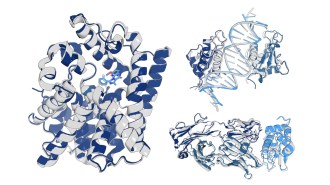Someday, the very fabric of your shirt might contain flexible electronic devices that monitor your vital signs or enable you to dial in the color or pattern you want to wear that day. Futuristic clothing of this sort may be closer to your closet now that researchers have developed a type of transistor-on-a-fiber.

Josephine B. Lee and Vivek Subramanian of the University of California, Berkeley say that the perpendicular arrangement of a fabric’s fibers should make it possible to wire transistors such as these new fiber ones into sensing devices, wearable displays, and other electronic devices. Conductive wires among the fabric’s threads would provide the transistor-to-transistor links.
Unlike conventional transistor fabrication, which takes place at elevated temperatures and requires high precision and ultraclean conditions, making fiber transistors is “totally compatible with the weaving process,” says Lee. She’s slated to present this new work at an international meeting on electronic devices next month in Washington, D.C.
The two researchers make their new transistors by coating hair-thin strands of aluminum with an electrically insulating film. Doing that requires oven temperatures, but the step is completed before weaving takes place. Atop the insulating film, the researchers deposit a layer of pentacene, an organic chemical that behaves as a semiconductor.
In the lab, the researchers have demonstrated another important step in making fiber-based circuits: By positioning threads across the fiber transistors, the Berkeley team can deposit thin films of gold on the fibers except in the tiny areas where the overlying thread masks incoming gold vapor. This process breaks the fibers into discrete transistor regions, each of which can be contacted individually with thin, metallic wires during the weaving process.
“Using the fibers of the textile as shadow masks points to a possibly inexpensive way of making transistors on fabric,” comments Sigurd Wagner of Princeton University. On the other hand, pentacene transistors will require additional protective coatings to prevent degradation by moisture or exposure to the air, he notes.
For tasks such as sensing body temperature, even damaged transistors might work well enough, Lee says. She and Subramanian are now at work on the next step: weaving circuit-laden cloth from the new fibers.
****************
If you have a comment on this article that you would like considered for publication in Science News, send it to editors@sciencenews.org. Please include your name and location.





